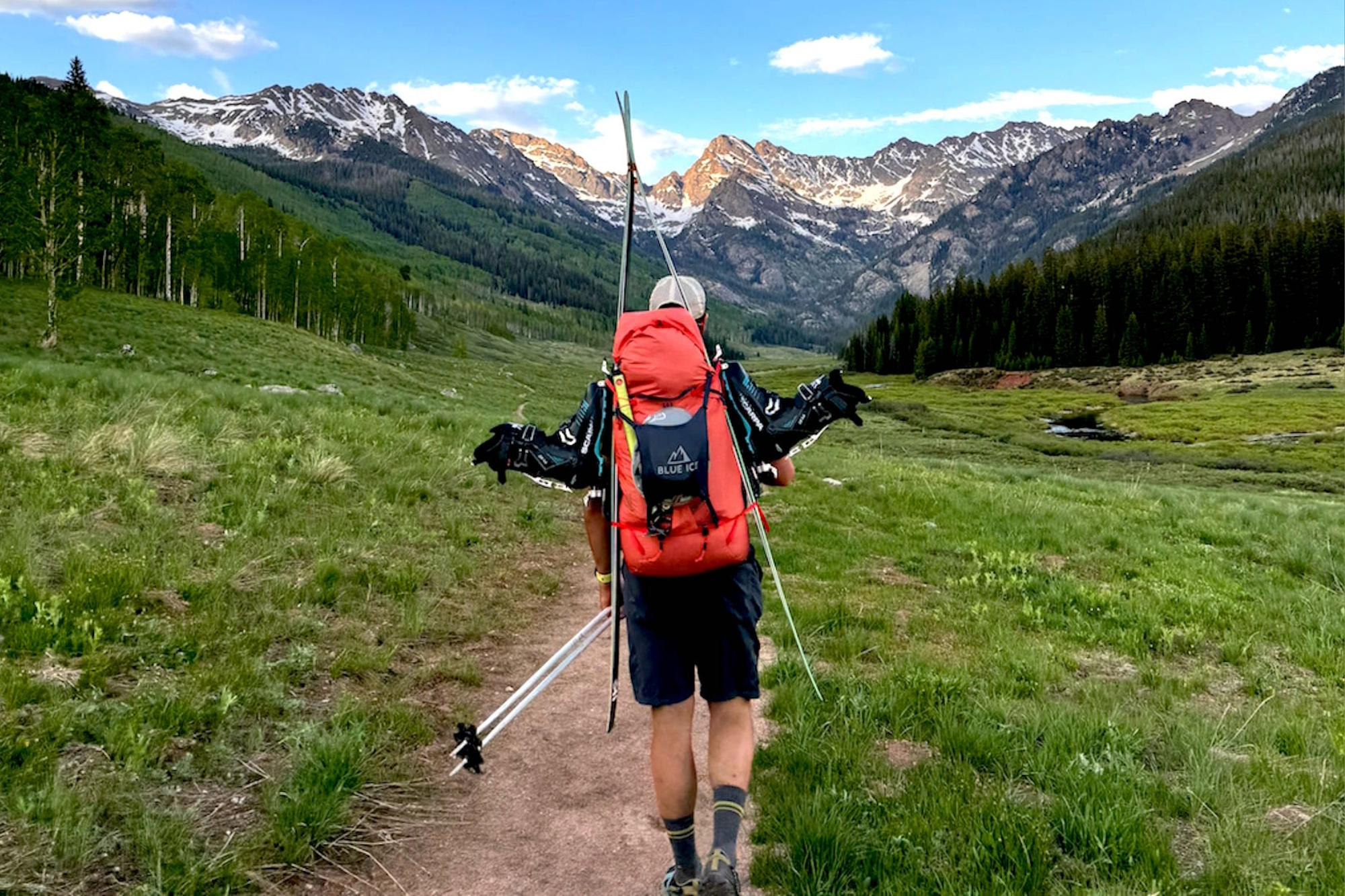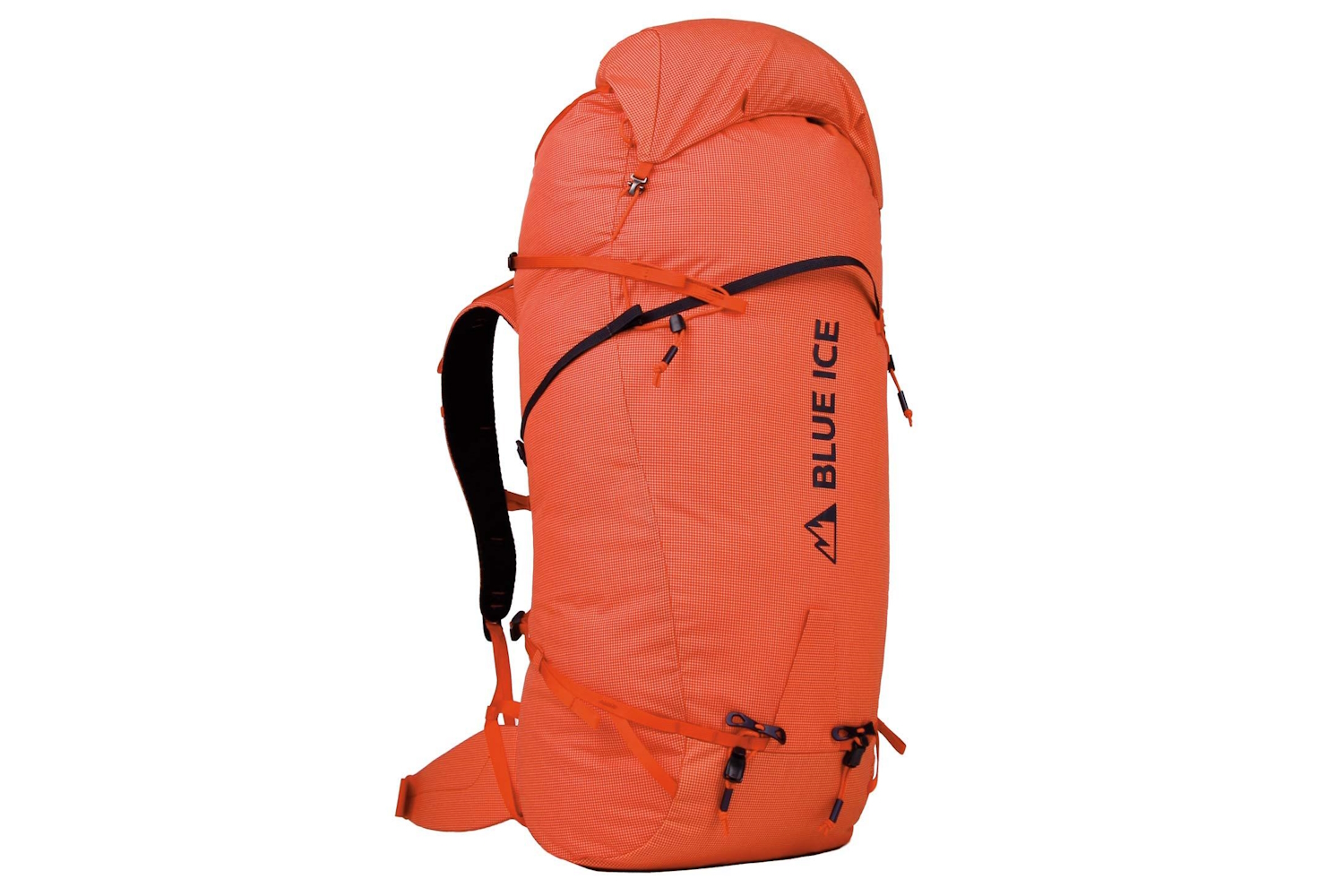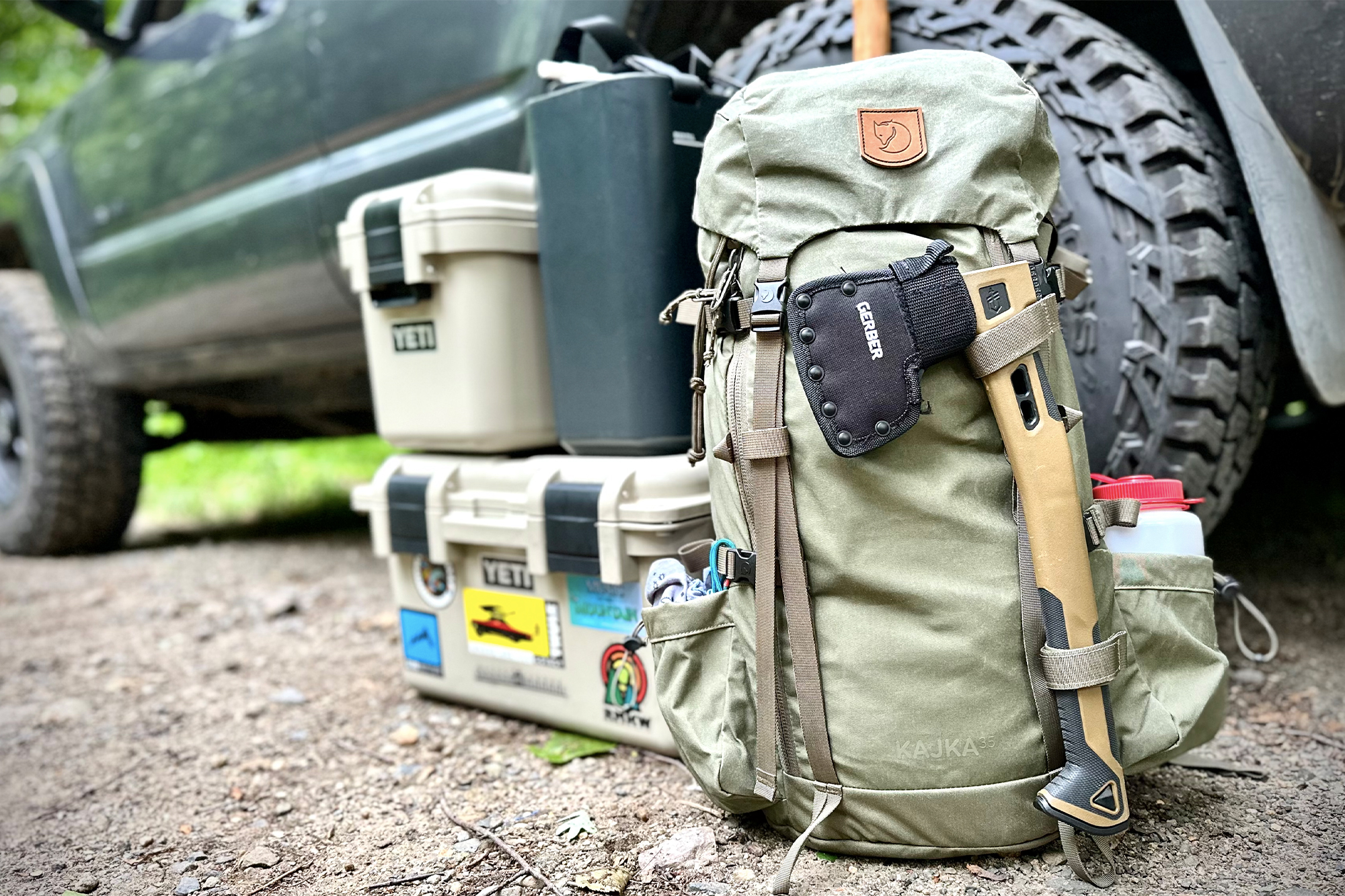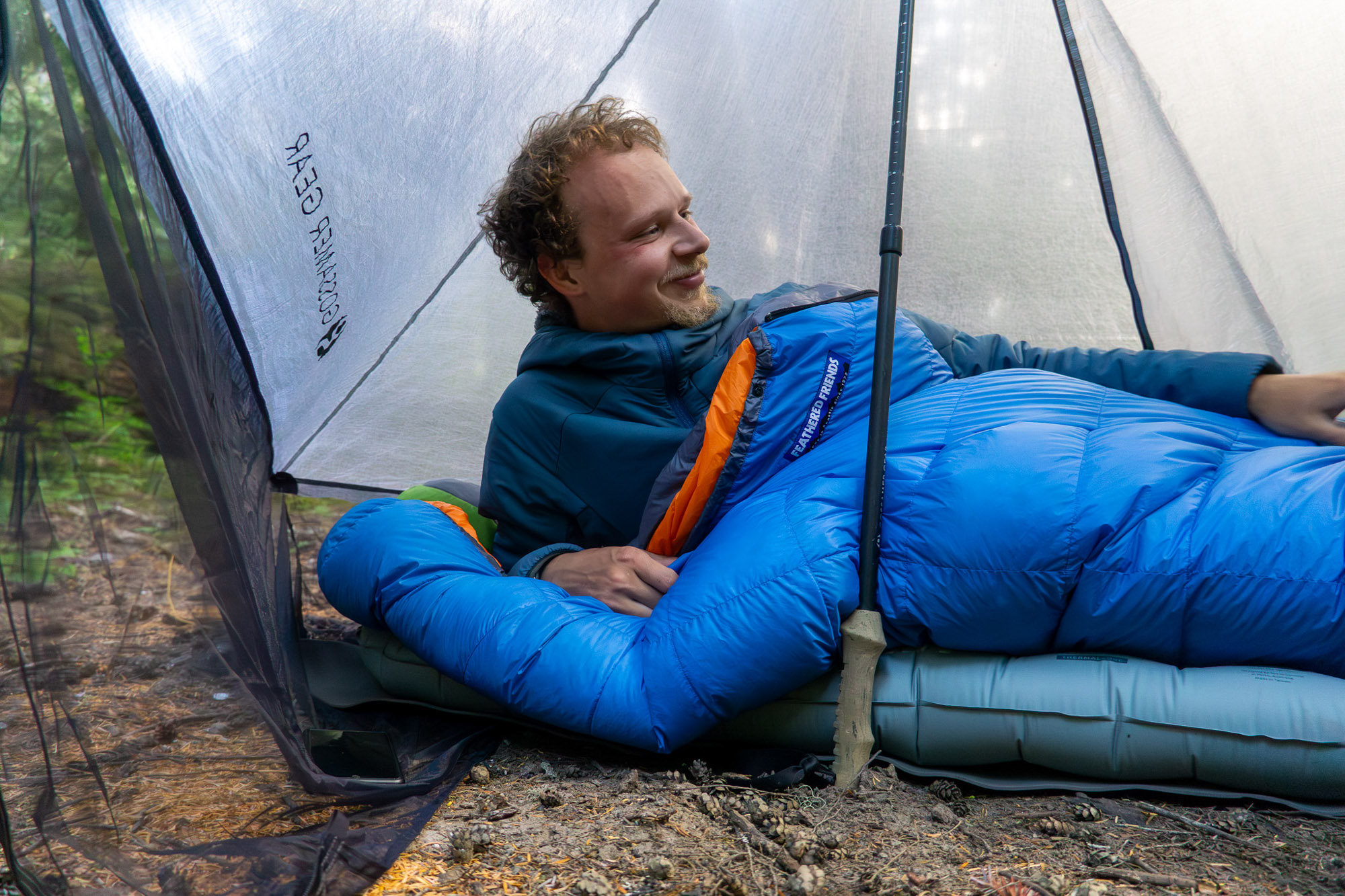Darkness had fallen as two friends and I stumbled through the last third of a bushwhack to a late spring ski line hidden deep within Colorado’s Gore Range. After collapsing into camp many hours later, it dawned on me — I hadn’t died of hip and shoulder pain from carrying such a heavy load in an ultralight backpack.
Of course, my legs felt the heavy payload, but the pack itself, the Blue Ice Stache 60 ($300), had disappeared onto my hips, shoulders, and back.
Given the Stache’s ultralight design, minimalist padding, and competitive price tag, relative comfort is not what I expected. But over the course of several months carrying heavy loads into the mountains, that first impression carried through.
But ultralight and moderate price comes at a cost — usually durability. After a few tiny holes formed in high-wear areas, I couldn’t help but ask myself, did Blue Ice go too far in its pursuit of shaving weight?
In short: The Blue Ice Stache 60 checks almost all my boxes for an ultralight backpacking and mountaineering backpack. Big open tube? Removable lid and frame? Competent rope, ski, and ice tool carry? Check, check, and check. But where the Stache 60 really stood out was its ability to expand to engulf days’ worth of gear and then pare down into a light and fast day pack.
All that, and did I mention it’s ultralight? Almost alarmingly so at 862g. There’s a durability tradeoff there, but by cutting back on frills and features, Blue Ice put together a real contender of a light and fast mountain pack for folks who want to travel deep into the mountains and are willing to handle it with some level of care.
Looking for a new ultralight climbing pack? Check out where the Blue Ice Stache lands among the rest of the market in our Best Ultralight Backpacks Buyer’s Guide.
- Material: 210D Robic nylon ripstop
- Internal pouch for bladder or oxygen:
- Removable lid:
- Internal zipped accessory pocket:
- A-frame ski carry option:
- Removable spring steel frame:
- Helmet holder compatible:
- Weight: 920g/700g summit weight
- One size back length:
Pros
- Ultralight
- Relatively comfortable minimalist padding
- Simple and streamlined
- Versatile design
Cons
- Not the most durable
Blue Ice Stash 60 Review
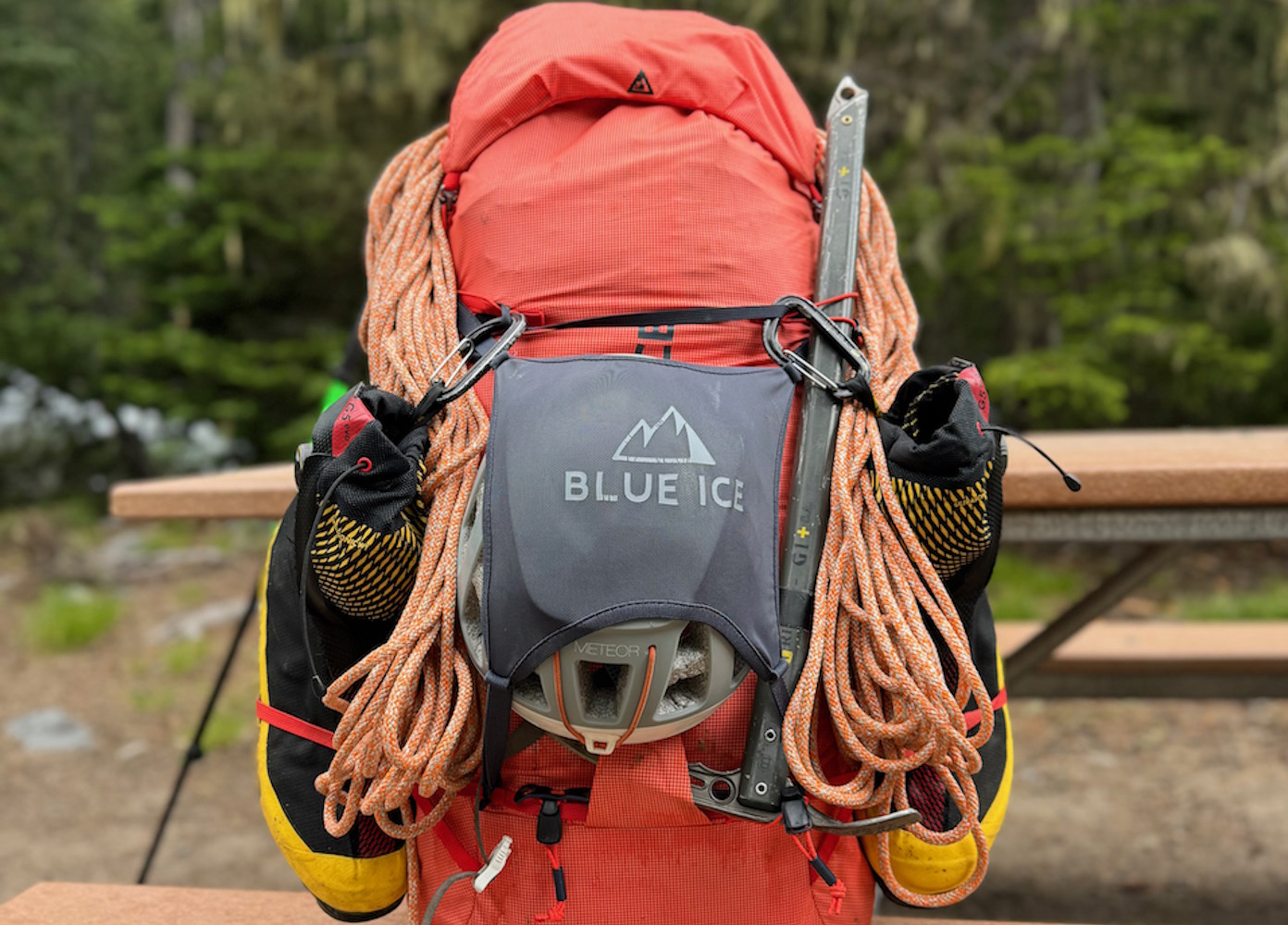
Layout & Materials
The Blue Ice Stache 60 is about as simple as it gets. It’s a tube with a few well-placed straps, minimalist padding, and subtle yet functional features. In addition to the big main compartment, the pack sports two internal pockets. There is one that can hold a 3L water bladder (or an oxygen bottle for those users who find themselves on 8,000m peaks). Then, there is another generous essentials pocket right below the opening.
The main 210D Robic nylon ripstop fabric is very light. After a few overnight backcountry ski trips in Colorado’s Gore Range, the pack was looking far from new. It didn’t help that I was purposefully handling sans care for testing purposes. Some scuffs started to show on the outside, and a ski edge had cut into the side.
Did a smidge of concern cross my mind while I was packing for a 3-day ascent of Mt. Rainier a few weeks later? Sure. I could picture a scenario where all 40+ pounds of gear burst out of the pack from that small tear, scattering across glacial ice and dooming the climb. But the Stache hadn’t let me down yet. And I didn’t seriously believe that it would fail catastrophically without giving plenty of obvious warning signs.
Shapeshifting Body
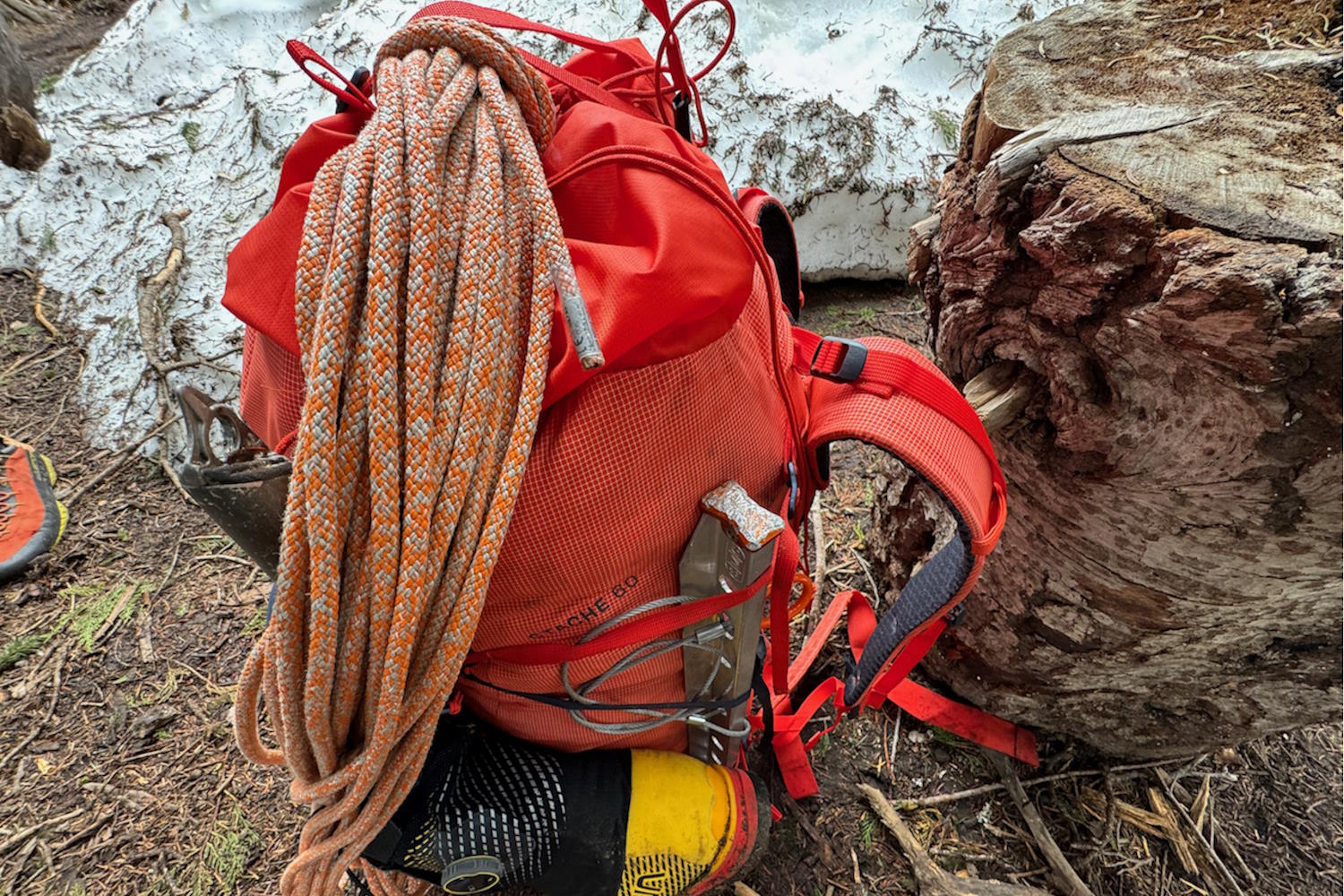
So I found myself in the parking lot of one of Mt. Rainier’s Eastern routes, stuffing the Stache to its absolute limit. Sleeping kit in first — Western Mountaineering’s Alpinlite sleeping bag and Outdoor Vitals’ Oblivion sleeping pad. Next went my huge puffy North Face Pumori jacket, extra layers, and stove. Then, all my food for the next 3 days.
Many pounds of glacier climbing gear piled on next, followed by 3L of water, food, and everything else, plus bonus food that I wasn’t sure I’d have room for. The main compartment was maxed out. The upper overstuff skirt supplied the extra volume that I couldn’t have gone without.
Once it was stuffed, I started lashing gear to the outside using a generous array of loops, straps, and anchor points: rope under the lid, picket under the compression straps, mountaineering boots attached on the front and tucked under a strap. Last, I used a helmet net from a different Blue Ice bag to secure my brain bucket.
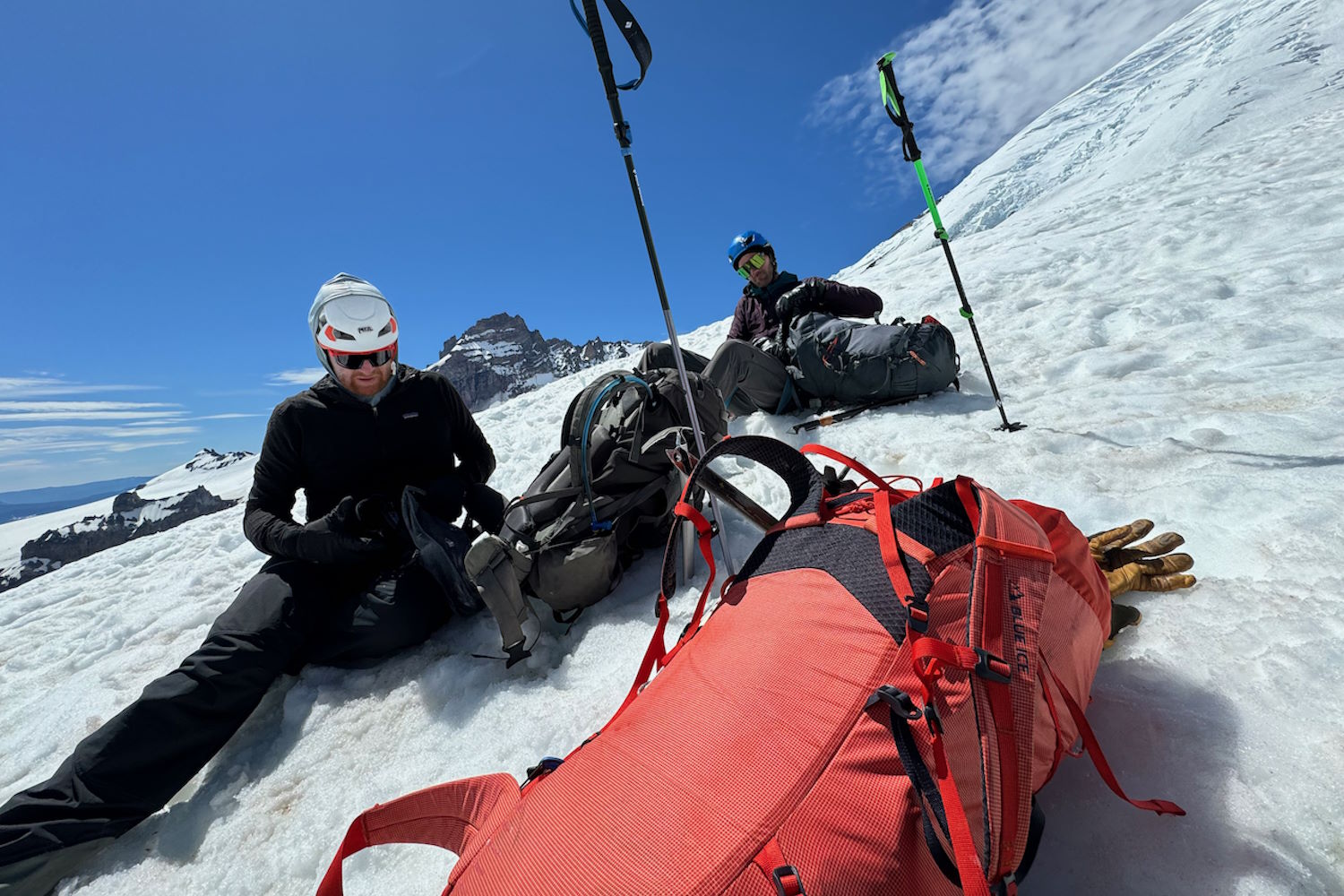
After a few miles of hiking to the only backcountry camp we could reserve on the route, I dumped the gear, set up basecamp, and repacked the Stache 60 with gear our team of three would need for the 15-hour summit attempt beginning at 9 p.m.
That kit took up significantly less space, but the overstuff skirts folded downward and tucked into the pack. I removed the lid, which made it look like a 40L pack of a similar style. Three compression straps on each side helped cinch down the load and further reduce the pack’s volume.
The Blue Ice Stache 60 can be stripped even further for the gram counters by pulling the 74g wire frame and foam sheet out of the back panel, dropping the weight to 636g. You lose some structure and carrying comfort. But serious alpinists and ultralight backpackers will appreciate the minimalist option.
Carrying the Stache
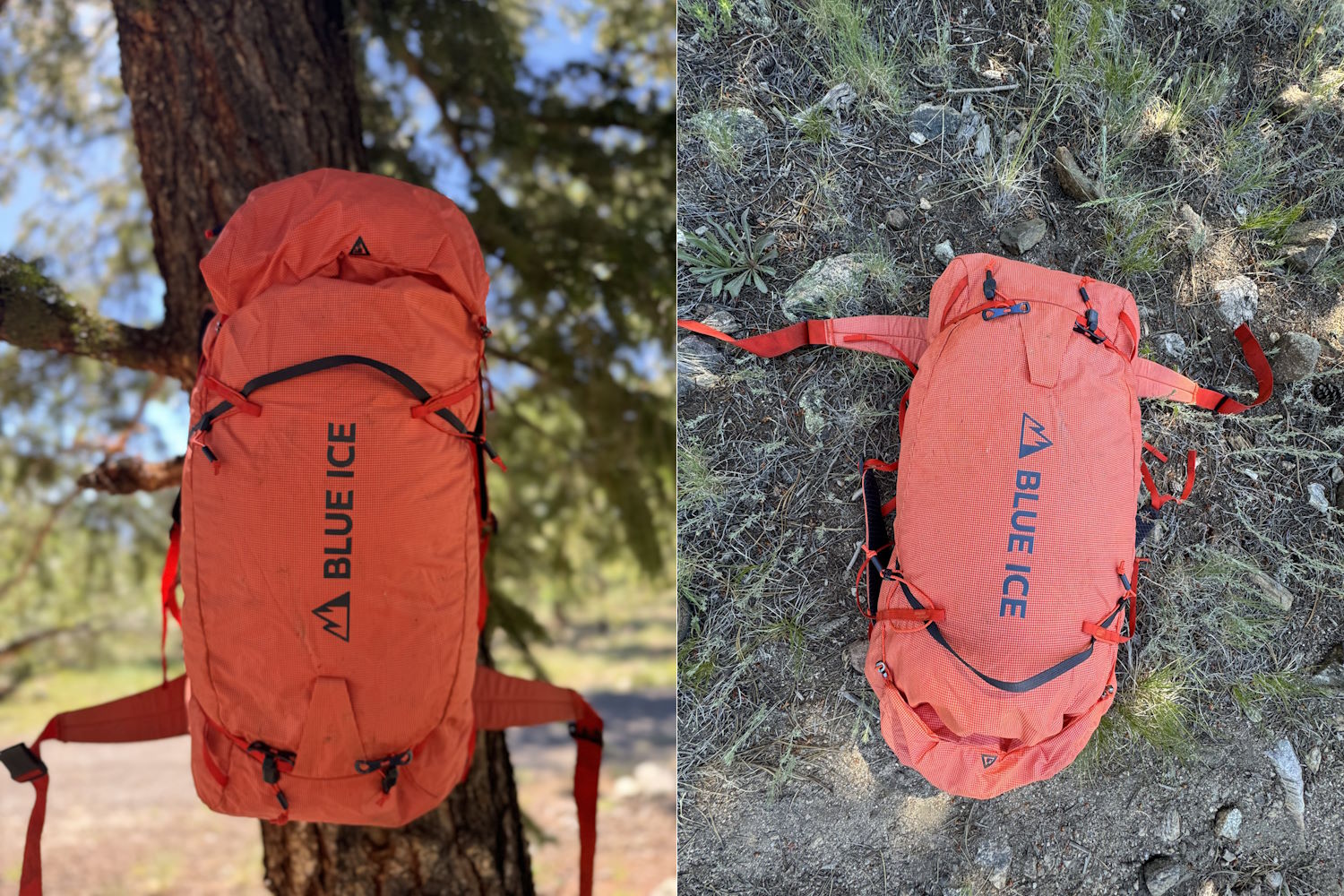
I’ve tested many ultralight backpacks over the past few years. If I’ve learned anything, it’s that padding is the first thing to go when designers are cutting weight. The Stache 60 is no different. The hip and shoulder straps are absolutely Spartan, but surprisingly, that didn’t make the pack uncomfortable.
Even with cushier packs, like the Osprey Mutant 52, I’ve come away from mountaineering trips with bruises on my hips from carrying heavy loads over long distances. But after 20 total hours of hiking over two days on Mt. Rainier, nothing.
In fact, during all the time I’ve carried this pack with heavy loads, I haven’t been perturbed by discomfort or straps digging into the meat of my shoulders and hips. That’s remarkable, considering just how little padding this pack utilizes. Blue Ice did a lot with a little on this one.
I continued to appreciate how well the pack carried over tricky terrain. My balance wasn’t thrown off quite like it is with bulkier backpacking packs. I felt agile while scrambling over rock.
Part of that levity comes from the removable spring steel frame. That does a good job of distributing the weight and giving the pack good form, even when loaded down. Plus, it has load adjuster straps, which aren’t always included in ultralight packs, to help balance the load. The whole thing is low profile and rides close to your body, too.
Removable Lid
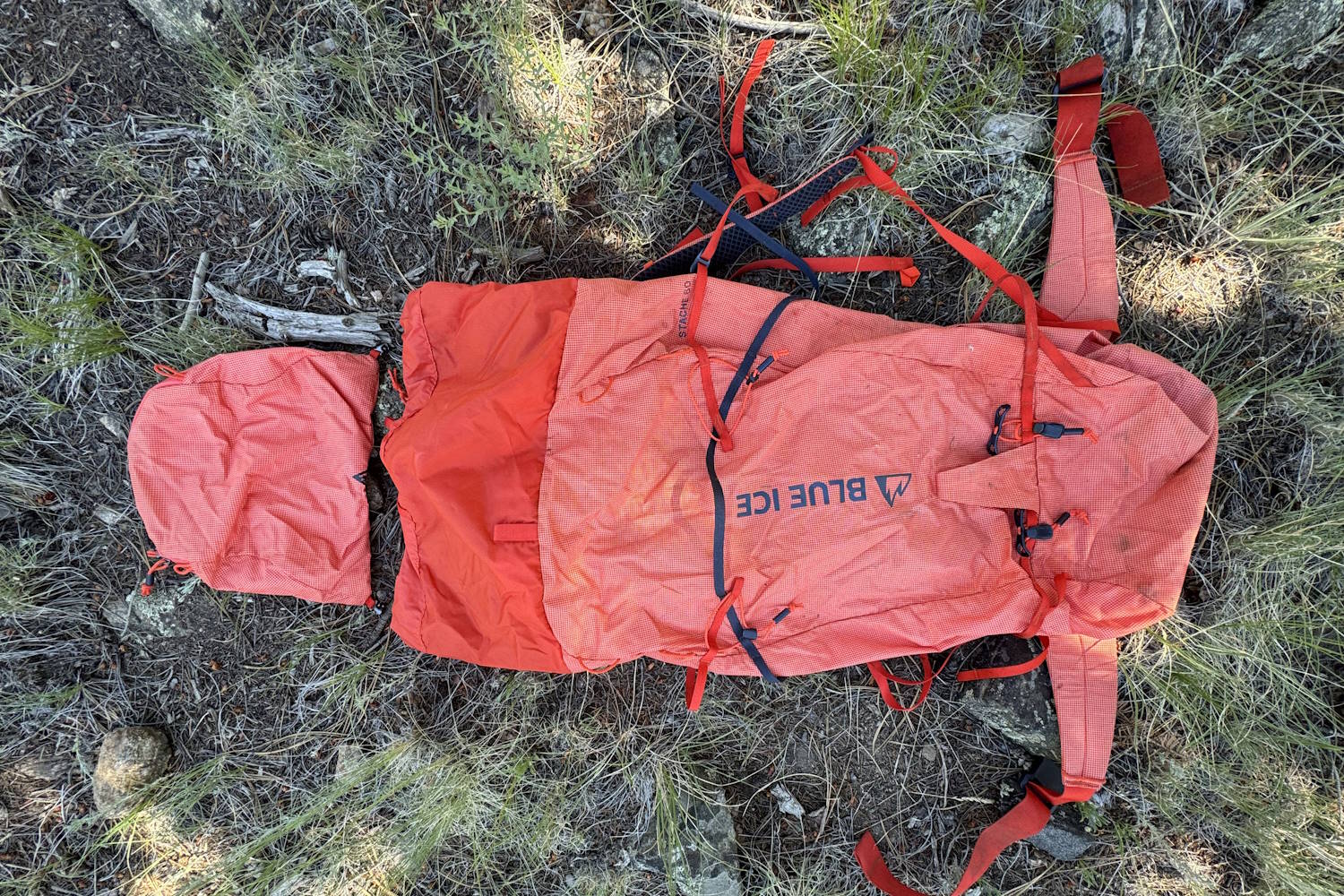
The pack’s 75g lid is interesting. I’d call it “refreshingly simple.” Others might see it as an afterthought. Regardless, its 2-3 L of capacity was just enough for my toiletries, headlamp, sunscreen, sunglasses, and on-deck snacks. Good thing, too, because it’s the only external pocket on the pack.
Like plenty of other packs, it’s designed to separate from the rest of the pack. It stays on theme here, too. It shuns bulky buckles and instead relies on two double hooks that connect to loops on the outside of the pack. A third loop accepts the rope strap from the main part of the pack, which has plenty of slack to accommodate a full loadout with a rope draped under the lid.
When the overstuff skirt expands to engulf maximum loads, the lid attaches higher up on the pack’s body. It never restricted the volume.
The lid is slightly floppy when the pack isn’t full, though. Fortunately, the Stache functions and looks completely normal without the lid on top. When I didn’t need the extra capacity or the main body was only partially full, I’d simply remove it and toss it in the main body of the pack or leave it at camp. It’s so light that I didn’t mind keeping it in there as an internal organizer compartment.
Durability
Blue Ice focused on making a light, versatile pack with the Stache 60. As I expected after my first double-take at the low weight, that comes at a cost of some durability. Don’t get me wrong, the Stache survived many multiday mountain outings. The mountains have begun to take their toll, though.
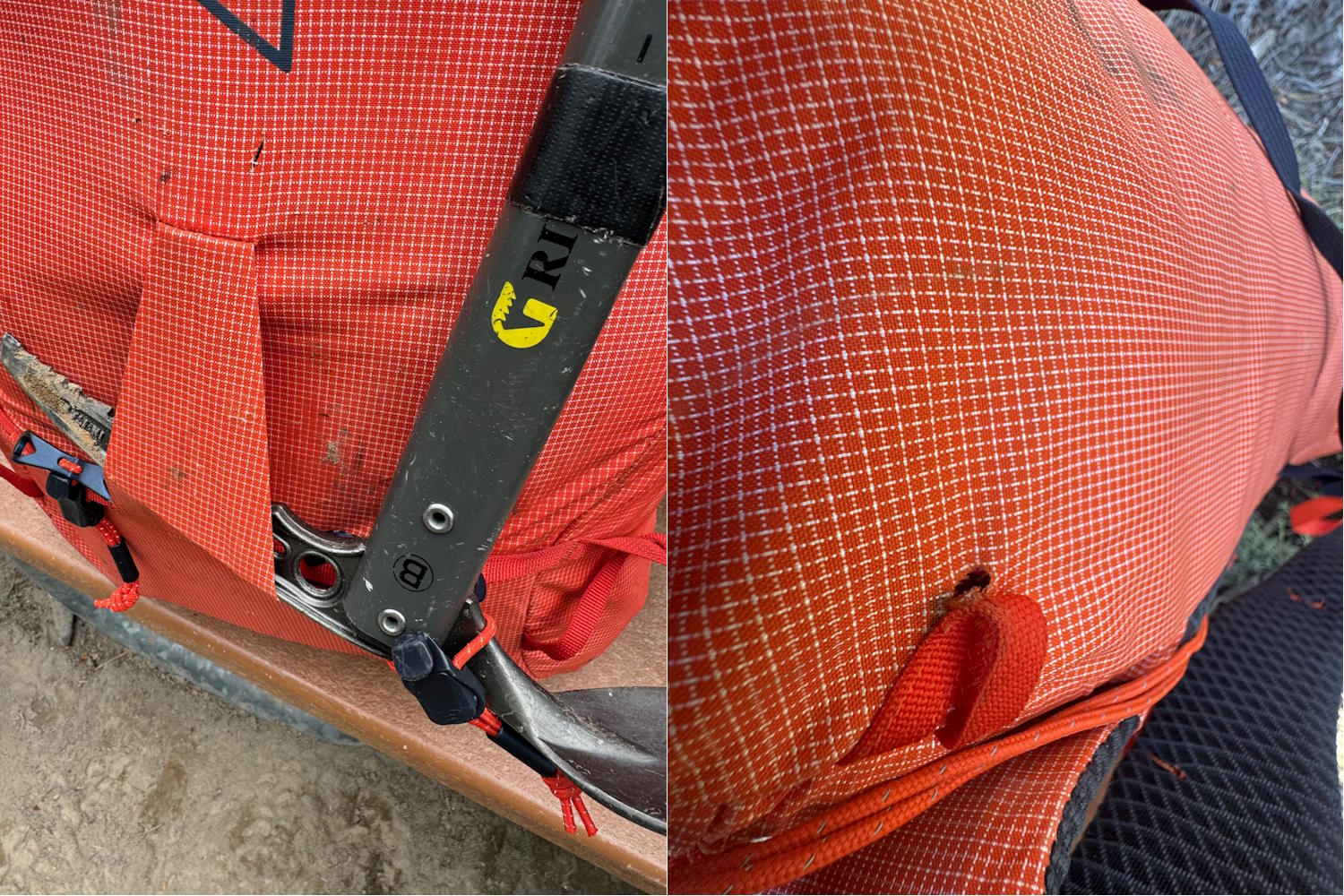
The pack’s 210D nylon ripstop body showed signs of abrasion fairly quickly as I dragged it over rocks while fully loaded, especially on the bottom and the front. One small hole formed on the outside where my avalanche shovel was pressed against the inside of the fabric. And my sharp ski edge didn’t have trouble slicing the nylon when the pack was fully loaded. A little extra reinforcement in high-wear areas wouldn’t be the worst revision.
While the pack’s body was somewhat vulnerable, I appreciated Blue Ice’s buckle and hook strategy. They used metal hooks in place of buckles everywhere except the hip belt, which are far more durable than plastic buckles. The continuous webbing loops around the pack gave me confidence that I wouldn’t experience a catastrophic blowout on the route even if the fabric suffered a major tear.
Tiny Gripes

While alpinists and climbers won’t worry about it, ultralight backpackers will probably be annoyed with the hip belt’s lack of pockets. The benefit is that the hip belt can wrap around the backpack and essentially disappear or be worn with a climbing harness without being annoying. That also means your snacks will need to find a ride elsewhere.
My last tiny gripe is with the ice tool carry — the dogbones are too chunky to fit through the eye of my Grivel G1+ ice axe. They work fine with my Petzl Nomic Ice Tools, and they’ll accommodate the vast majority of tools out there, but still, there isn’t a reason I can think of why those dogbones shouldn’t be slimmed down to fit all ice tools and piolets on the market.
Conclusion
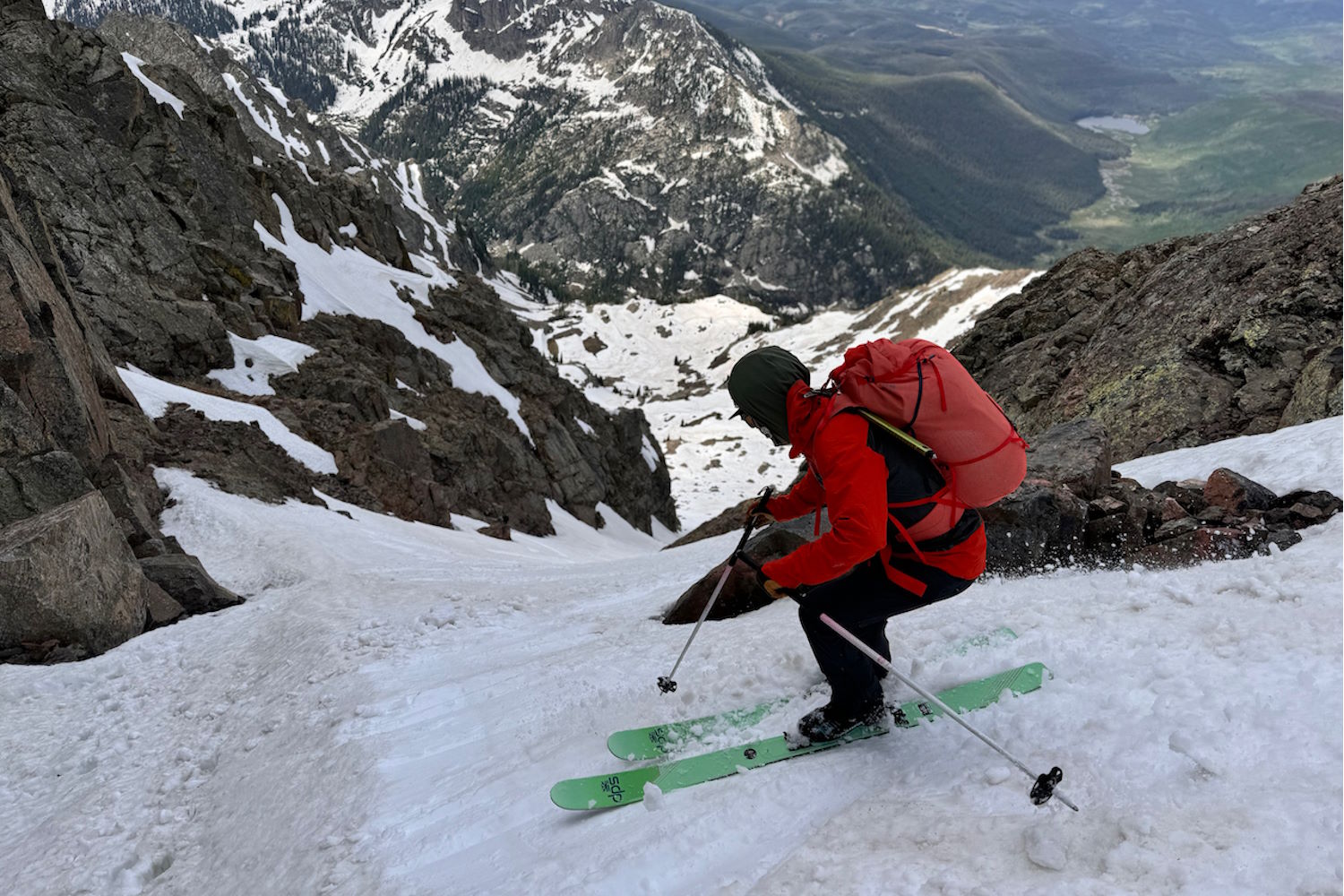
So, did Blue Ice go too far with this one? On paper, I thought they might have. But once I started hauling a bunch of gear into the backcountry day in and day out, I felt differently. The Stache isn’t a durable workhorse of a backpack — if that’s what you’re after, check out the Osprey Mutant 52.
I also wouldn’t call the Stache 60 a quiver-of-one backpack for all outdoor adventures. It’s certainly versatile, but there are better packs for day trips; for example, more comfortable and feature-rich packs for backpacking, and more durable climbing packs are out there. But, the Stache 60 can handle all those activities remarkably well at an incredible weight and a competitive price.
Bottom line: I like this pack a lot — even more than I expected. The Stache 60 is an ultralight mountaineering and alpine climbing pack that can also do double duty for backpacking. It swallows an enormous amount of gear, pares down for the summit, has the minimalist features you need and nothing you don’t, and carries very well for its scant weight and padding.
